How Trump Happened
It’s not just anger over jobs and immigration. White voters hope Trump will restore the racial hierarchy upended by Barack Obama.
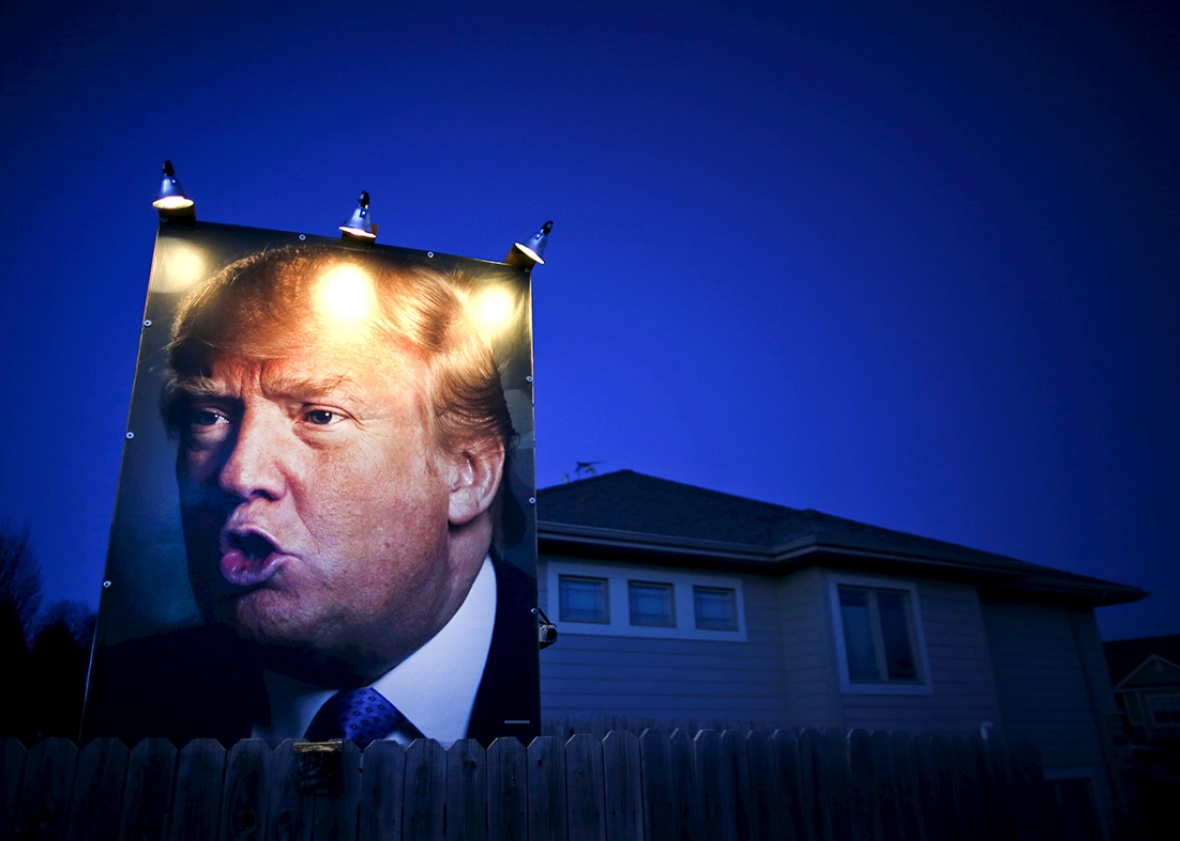
Jim Young/Reuters

Photo from "Postcards From America" by Mark Power/Magnum Photos
“First they ignore you, then they laugh at you, then they fight you, then you win,” goes the line attributed to Mahatma Gandhi. Typically, you’ll find this pearl adorning a classroom or splashed across a motivational poster. But last month, on the eve of Super Tuesday—when a dozen states cast ballots for the Republican presidential nomination—you could find it on Donald Trump’s Instagram page, the caption to a photograph of a massive rally in Alabama the day before.
Perverse as it may seem for the belligerent real estate magnate to channel even apocryphal Gandhi wisdom, the line is apt. First, we did ignore him—as a buffoon who wouldn’t survive past the summer. Then, we laughed at him—as a buffoon who wouldn’t survive through fall. Eventually, Republicans began to fight him, terrified of his traction with voters. Now, he’s winning, with more votes and delegates than anyone left in the field. On the eve of another critical Tuesday slate of votes, Trump is on the verge of an even greater victory. Polls show him in command both in the smaller states that will award their delegates proportionally, and in the larger, winner-take-all prizes of Ohio and Florida. By Wednesday morning, Trump could be a stone’s throw from the Republican presidential nomination.
We’ve learned, by now, not to underestimate Donald Trump, but we’re still struggling to understand his rise. Why now? Why, when the United States is stronger and wealthier than it’s been since the Great Recession, are some voters suddenly receptive to nativist demagoguery? How is Trump—who has been described as a proto-fascist, if not an outright fascist—just a few steps away from leading the Grand Old Party?
For some on the left, Trump is the result of decades of divisive politics—the inevitable outcome of a Republican political strategy that stoked white racial resentment to win elections. “Trump’s campaign can best be understood not as an outlier but as the latest manifestation of the Southern Strategy, which the Republican Party has deployed for a half-century to shore up its support in the old Confederate states by appeals to racial resentment and white solidarity,” writes Jeet Heer in the New Republic.
For some on the right, Trump is the grassroots response to Republican elites who have abandoned their working-class voters to the whims of laissez-faire capitalism. “[T]he Republican Party, and the conservative movement, offer next to nothing to working-class Trump supporters,” writes Michael Brendan Dougherty in the Week. “There are no obvious conservative policies that will generate the sort of growth needed to raise the standard of living for these working-class voters.”
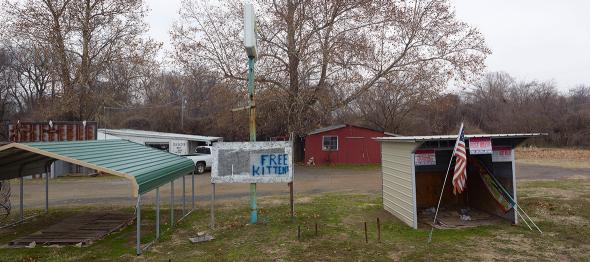
Photo from "Postcards From America" by Mark Power/Magnum Photos
These explanations aren’t mutually exclusive; each touches on an important element of the Trump phenomenon. The Republican Party does have a tradition of harnessing white racial resentment to win elections, from the infamous “welfare queen” rhetoric of Ronald Reagan to Newt Gingrich labeling Barack Obama the “food stamp president” during the 2012 presidential election. GOP elites have failed to offer solutions to struggling working-class whites, who have suffered keenly from the collapse of the industrial economy. And it is true that rapid, disorienting economic and cultural change has led a substantial group of Americans to turn to someone who disdains feckless politicians and pledges to restore the country’s strength.
But none of these theories answer the question why now. Each of these forces has been in play for years. Wages for working-class Americans have long been stagnant, and the collapse of job opportunities for workers without a college degree was apparent in the 1990s, long before the Great Recession. What’s more, economic and social decline—as well as frustration with foreign competition, which Trump has channeled in his campaign—isn’t unique to white Americans. Millions of Americans—blacks and Latinos in particular—have faced declining economic prospects and social disintegration for years without turning to a demagogue like Trump.
Race plays a part in each of these analyses, but its role has not yet been central enough to our understanding of Trump’s rise. Not only does he lead a movement of almost exclusively disaffected whites, but he wins his strongest support in states and counties with the greatest amounts of racial polarization. Among white voters, higher levels of racial resentment have been shown to be associated with greater support for Trump.
All of which is to say that we’ve been missing the most important catalyst in Trump’s rise. What caused this fire to burn out of control? The answer, I think, is Barack Obama.
There have been some conservative writers who have tried to hang Trump’s success on the current president, pointing to his putatively extreme positions. But in most respects, Obama is a conventional politician—well within the center-left of the Democratic Party. Or at least, he’s governed in that mode, with an agenda that sits safely in the mainstream. Laws like the American Recovery and Reinvestment Act and the Affordable Care Act weren’t impositions from the far left; they were built out of proposals from the right and left, passed by a majority of Congress that was elected to pursue solutions on health care and the economy. Barack Obama is many things, but conservative rhetoric aside, he’s no radical.
We can’t say the same for Obama as a political symbol, however. In a nation shaped and defined by a rigid racial hierarchy, his election was very much a radical event, in which a man from one of the nation’s lowest castes ascended to the summit of its political landscape. And he did so with heavy support from minorities: Asian Americans and Latinos were an important part of Obama’s coalition, and black Americans turned out at their highest numbers ever in 2008.
For liberal observers, this heralded a new, rising electorate, and—in theory—a durable majority. “The future in American politics belongs to the party that can win a more racially diverse, better educated, more metropolitan electorate,” wrote Harold Meyerson in the Washington Post after the 2008 election. “It belongs to Barack Obama’s Democrats.”
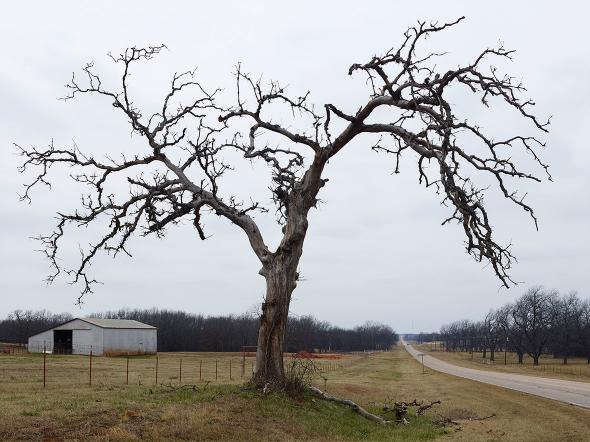
Photo from "Postcards From America" by Mark Power/Magnum Photos
For millions of white Americans who weren’t attuned to growing diversity and cosmopolitanism, however, Obama was a shock, a figure who appeared out of nowhere to dominate the country’s political life. And with talk of an “emerging Democratic majority,” he presaged a time when their votes—which had elected George W. Bush, George H.W. Bush, and Ronald Reagan—would no longer matter. More than simply “change,” Obama’s election felt like an inversion. When coupled with the broad decline in incomes and living standards caused by the Great Recession, it seemed to signal the end of a hierarchy that had always placed white Americans at the top, delivering status even when it couldn’t give material benefits.
In a 2011 paper, Robin DiAngelo—a professor of multicultural education at Westfield State University—described a phenomenon she called “white fragility.” “White Fragility is a state in which even a minimum amount of racial stress becomes intolerable, triggering a range of defensive moves,” she writes. “These moves include the outward display of emotions such as anger, fear, and guilt, and behaviors such as argumentation, silence, and leaving the stress-inducing situation. These behaviors, in turn, function to reinstate white racial equilibrium.”
DiAngelo was describing private behavior in the context of workplace diversity training, but her diagnosis holds insight for politics. You can read the rise of Obama and the projected future of a majority nonwhite America as a racial stress that produced a reaction from a number of white Americans—and forced them into a defensive crouch. You can see the maneuvering DiAngelo describes in the persistent belief that Obama is a Muslim—as recently as last fall, 29 percent of Americans held this view, against all evidence. It is a way to mark Obama as “other” in a society where explicit anti-black prejudice is publicly unacceptable. Consistent with this racialized fear and anxiety is the degree to which white Americans now see “reverse discrimination” as a serious problem in national life. For its American Values Survey, the Public Religion Research Institute asks respondents whether “discrimination against whites is a significant problem.” In last year’s survey, 43 percent of Americans—including 60 percent of working-class whites—said discrimination against whites had become as big a problem as discrimination against blacks and other minorities.
The anxieties DiAngelo describes, and the fears cataloged by the American Values Survey, have real political impact. In a 2014 study, political scientists Maureen Craig and Jennifer Richeson tried to measure “perceived status threat” from a shift in racial demographics, surveying how people responded when informed that California is now home to more blacks, Hispanics, and Asians than non-Hispanic whites. In other words, how do white Americans react to unrelated political questions when exposed to news of a “majority-minority” future? The results were clear. “Making the majority-minority shift in California salient led politically unaffiliated white Americans to lean more toward the Republican Party,” wrote Craig and Richeson. Likewise, “making the changing national racial demographics salient led white Americans (regardless of political party affiliation) to endorse both race-related and relatively race-neutral conservative policy positions more strongly.”
The Obama era didn’t herald a post-racial America as much as it did a racialized one, where millions of whites were hyperaware of and newly anxious about their racial status. For example, during a Marco Rubio rally before the New Hampshire primary in February, I spoke to a voter who, in her way, gave voice to this hyperawareness. “I think he’s divided this country in many ways,” said Lori, an older white woman, of Obama. “I know in a lot of places in America there’s a divide in color … like, when I walk up to someone in the stores”—she looked at me to emphasize what she means—“I feel that they’re wondering if I like them. … I didn’t feel that before. I was accepting of everyone, and I hate that he brought that.”
This isn’t the first time in our history that whites have worried about losing their pre-eminent status. In the early 20th century, massive Southern and Eastern European immigration, as well as Chinese immigration in the American West, fueled nativism and white racism, and helped lead to the resurrection of the Ku Klux Klan. The revived Klan organized millions of white Americans in a movement against immigrants, blacks, and religious minorities like Catholics. This, along with a broader nativist movement, had an enormous impact on American politics—entire states, like Indiana, were controlled by Klan-backed politicians while national lawmakers passed harsh, restrictive immigration laws. Our current burst of nativism and racial anxiety is proving to be a similarly potent force.
“The election of the country’s first black president had the ironic upshot of opening the door for old-fashioned racism to influence partisan preferences after it was long thought to be a spent force in American politics,” wrote Brown University political scientist Michael Tesler in a 2013 paper titled “The Return of Old Fashioned Racism to White Americans’ Partisan Preferences in the Early Obama Era.” For Tesler, “old-fashioned racism” isn’t a rhetorical term; it refers to specific beliefs about the biological and cultural inferiority of black Americans. His work suggests that there are some white Americans who, in his words, have “concerns about the leadership of a president from a racial group whom they consider to be intellectually and socially inferior.”

Photo from "Postcards From America" by Mark Power/Magnum Photos
Other research points to the degree to which Obama’s election seems to have exacerbated racial animus among white voters. In a paper titled “The Impact of Anti-Black Racism on Approval of Barack Obama’s Job Performance and on Voting in the 2012 Presidential Election,” a trio of researchers found a substantial increase in the number of voters with anti-black attitudes, which rose from 47.6 percent in 2008 to 50.9 percent in 2012. “The proportion of people expressing anti-Black attitudes,” they write, “was 32 percent among Democrats, 48 percent among independents, and 79 percent among Republicans.”
What does anti-black racism in the Obama era have to do with Donald Trump, who crashed the 2016 campaign with a wave of anti-Latino rhetoric?
Trump may have started this campaign by denigrating Latinos and Muslims, but his first appearance in the Obama era was in the context of anti-black racism. In 2011, Trump took the “birtherism” conspiracy—the belief that Obama is foreign-born and thus an illegitimate president—and turned it into a full-fledged movement. Even now, his supporters believe Obama is illegitimate—62 percent say he is a Muslim, and 61 percent that he was born in another country. I spoke to a voter who echoed this sort of othering anti-Obama rhetoric in Las Vegas, at a Trump event the day before the Nevada caucuses. “In my opinion, Obama is the most anti-American president that I have experienced. He bows down to every other country. He puts other countries before America,” explained Martin, a staunch backer of the real estate mogul.
More recently, anti-black racism has returned to the fore, with behavior that attracts those who would like to see the old racial hierarchy restored. He shares racist memes on Twitter and has built a symbiotic relationship with white nationalists, refusing a chance to repudiate former Klan leader David Duke during one interview and offering his son for an interview with a white-nationalist radio host. And in recent weeks, Trump supporters have attacked black protesters at his rallies. At an event in North Carolina, a protester was punched in the face by an audience member, while another yelled a racist slur. Afterwards, Trump condoned the behavior. “He was swinging, he was hitting people, and the audience hit back,” he said, despite no evidence of any attack from the protester. “That’s what we need more of.”
In St. Louis, Missouri, a Trump rally collapsed into scuffles between supporters and opponents, with multiple arrests. At a Kentucky rally—the same day Trump promised to defend supporters in court if they fought with demonstrators—two protesters were assaulted by members of a white-supremacist group. On Friday evening, demonstrators in Chicago held a mass rally against an impending Trump event, forcing the campaign to cancel. Trump blamed the ensuing melee on “thugs."
None of this is to discount the material facts behind Trump’s appeal to working-class whites. The collapse of the industrial economy in the wake of the Great Recession caused real devastation. The middle class has been losing ground for a long time, and there are few jobs for people without college degrees—or at least, few jobs that hold a path to mobility. Even in places where new factories have cropped up, unions are sparse and wages are low, following a race-to-the-bottom among the towns and cities that vie for the remaining manufacturing jobs. When economic desperation meets hopelessness—as we saw in the 1980s, when an earlier wave of deindustrialization ravaged the inner cities—the results are tragic.
The effects of these trends were highlighted in a widely analyzed study released last fall that showed rising mortality rates among middle- and working-class white Americans, the group that makes up Trump’s main body of support. Princeton University professor Anne Case and co-author Angus Deaton found that white working-class Americans are increasingly dying from suicide, alcohol abuse, and drugs. “In 1999,” writes Case for Quartz, “people in this group died from accidental drug and alcohol poisonings at four times the rate of Americans with a bachelor’s degree or more. By 2013, they were dying at seven times the rate of their better-educated peers. In 2013, they also committed suicide at more than twice the rate of people with more education, and died from alcoholic liver disease and cirrhosis at five times the rate of those with a college degree.”

Photo from "Postcards From America" by Mark Power/Magnum Photos
These spikes in mortality are so large that, for whites aged 45 to 54, they’ve lowered overall life expectancy. Young whites, meanwhile, face rising rates of addiction and a corresponding increase in mortality.
Canvas a Trump event and you’ll meet people who have seen these changes up close. They are teachers, police officers, small-business owners, and city employees who hold the closest thing to middle-class jobs in the rural towns and older suburbs where Trump draws his most ardent support. In the Michigan primary, for example, Trump won most of his votes from voters with incomes less than $50,000; in New Hampshire, he dominated among voters making less than $100,000. Everywhere, in fact, Trump is winning Republicans with modest middle-class incomes.
These somewhat better-off Americans have seen their friends and family fall into dependency, whether to drugs or alcohol or welfare. They are both sympathetic to this plight—which is why Trump’s call for more help for veterans and seniors resonates with them—but also frustrated and angry. The country, and its leaders, made a promise: If you worked hard, you would get ahead. But that didn’t happen. Instead, for millions of Americans, it was the reverse: They worked hard and fell behind. They’re afraid, for themselves and for their children. Trump speaks for them. “What do we all want?” Trump asked at a rally on the eve of the Nevada caucus. “We want security. We want a strong country.” Those who feel insecurity most acutely have turned out to back the real estate mogul en masse.
With that said, perceptions of race inform their embrace of Trump as well. In the recent past, holding the favored spot in our racial hierarchy brought benefits. As historian and political scientist Ira Katznelson details in When Affirmative Action Was White: An Untold History of Racial Inequality in Twentieth-Century America, being white was traditionally a pathway to middle-class security, the key that won access to vital mortgage and education programs, as the federal government worked to build a white middle-class in the middle part of the 20th century. Even after the civil rights movement and the end of formal discrimination against black Americans, it was still true that being white and middle-class offered protection from the worst of our economy’s ravages. Drugs, ghettos, and dependency existed among whites in pockets of the country, but they were popularly understood as black and Latino problems, not white ones. Now, that isn’t true. Now, middle-class whites face addiction and dependence, which adds a racial element to economic anxiety, as the security provided by whiteness no longer exists for many Americans.
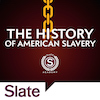
With Jamelle Bouie and Rebecca Onion.
Special appearances by Henry Louis Gates Jr.
There are objections to this narrative. It’s possible, for example, that Obama’s decision to push forward with liberal policies and to galvanize a liberal base produced an inevitable partisan backlash, of which Trump is part. Had Obama governed more moderately, had he tried to find a space in his coalition for white working-class voters, then Trumpism might have stayed in the deep.
But this analysis ignores the extent to which Trump reflects specific choices by Republican and conservative elites. From indulging anti-Obama conspiracy theories to attacking him as an enemy of the United States, conservatives chose to nurture resentment and anxiety and distill it into something potent. You can draw a direct line to the rise of Trump from the racial hysteria of talk radio—where figures like Rush Limbaugh, a Trump booster, warned that Obama would turn the world upside down. “The days of [minorities] not having any power are over and they are angry,” said Limbaugh to his audience. “They want to use their power as a means of retribution.”
It also ignores the degree to which these voters likely would have found this hypothetical partnership inimical to their conception of their interests. Even if Obama had reached out, they would be mere partners in a larger coalition, when what they want is to be its driving force. Trump speaks to that desire, signaling—in ways subtle and otherwise—that he plans to “Make America Great Again” by making the white American worker the center of his universe.
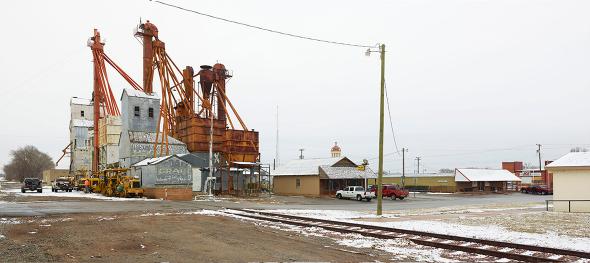
Photo from "Postcards From America" by Mark Power/Magnum Photos
Throughout our history, a substantial minority of whites has responded to America’s always-shifting racial and economic terrain with a primal fear of being dominated, of finding themselves at the bottom of the hierarchy. It’s one of the strongest forces in American life, and politicians and demagogues of many partisan stripes channeled it long before Donald Trump; it’s so strong that researchers have found a direct and robust connection between a given county’s proportion of enslaved people before emancipation and its present-day Republican vote share. The more slaves held in a given area, the more Republican votes.
The good news is that movements like Trump’s tend to fade away. The bad news is that, even in defeat, they are influential. One antecedent to Trump—Alabama Gov. George Wallace—never won a national party nomination. But he had massive impact on the direction of national politics, giving Richard Nixon raw materials for his “Southern Strategy” of racial resentment that would shape and define American politics for the next four decades.
For Americans opposed to Trump, it’s tempting to believe that his base is a shrinking part of America; that these are the death throes of racial reaction. Eventually, goes the thinking, they’ll fade from view too.
That is wishful thinking. America is a diverse country. But it’s still a predominantly white one, where a Trumpist movement can still encompass millions of voters. And “eventually” might be a while. In the space between now and then, Trumpism—the potent mix of open prejudice, nationalist aggression, and heterodox economic policy—could thrive. In fact, it likely will, since the trends that produced Trump—a brittle economy, an ailing white working-class, an insecure white middle-class, a rising nonwhite population, political gridlock, and growing minority political power—are ongoing.
Given the more than uphill climb he would face in a general election, Trump the person might have an expiration date. But Trumpism will enter the firmament of modern politics, a powerful current that will shape the future of the Republican Party, and the Democratic one too. Trump came on the stage as a clown. But whenever he leaves, he’ll do it as a new icon of a familiar movement in American life.